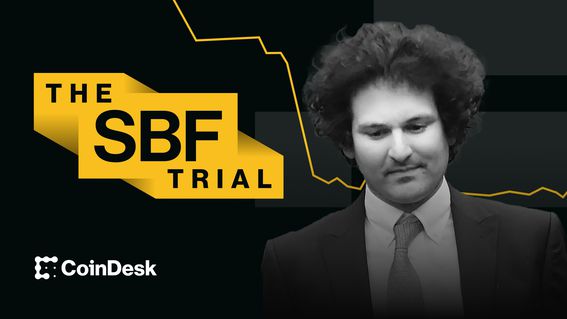
Sam Bankman-Fried stands accused of committing wire fraud and conspiracy to commit several other types of frauds. His once-mighty crypto exchange, FTX, collapsed in dramatic fashion nearly a year ago, shedding billions in value. And in two weeks, he’ll begin his effort to convince a jury of his peers that he didn’t commit any of many alleged crimes while running the company.
You’re reading The SBF Trial, a CoinDesk newsletter bringing you daily insights from inside the courtroom where Sam Bankman-Fried will try to stay out of prison. Want to receive it directly? Sign up here.
If convicted of even one of the charges, Bankman-Fried faces years in a federal prison. If convicted of all of the charges, he could well spend decades, if not the rest of his life, behind bars.
But there are some nuances here. The maximum prison sentences are just guidelines. And like any criminal defendant, Bankman-Fried is innocent until proven guilty (even if the evidence made public so far seems damning). This discussion itself may be premature given his trial hasn’t even begun yet.
So how did we get here?
Samuel Bankman-Fried, 31, was arrested last December, a few short weeks after his empire filed for bankruptcy and ejected the Stanford and Jane Street alum who helmed it.
Federal prosecutors in the U.S. Attorney’s Office for the Southern District of New York filed an initial indictment bringing eight charges, including wire fraud and conspiring to commit securities fraud, commodities fraud and launder money.
They later filed a set of superseding indictments, which the defense team – led by famed attorneys Mark Cohen and Christian Everdell – successfully argued can’t be brought at this time due to international extradition treaty obligations. A second trial is tentatively scheduled for next year to address these charges.
Over the estimated six-week trial, prosecutors will place members of the FTX inner circle – including former Alameda Research CEO Caroline Ellison, former FTX Chief Technology Officer and co-founder Gary Wang and former FTX engineering director Nishad Singh – on the stand to testify against their former colleague, boss and roommate. They’ll present information from FTX’s systems and balance sheets and share audio recordings over the course of the trial, all while the defense tries to poke holes in the case.
In the lead-up, these teams of attorneys will try to find 10 or 12 jurors – out of a selection of hundreds – most sympathetic to their case.
Once Sam Bankman-Fried’s criminal trial begins – putting these months of paperwork docket fights behind us – his fate will hinge on his jury’s opinion. Is the former FTX CEO a crypto criminal, or perhaps merely a victim of circumstance? They’ll have to decide based on the facts of the case. But their ranks haven’t been filled quite yet. Right now, the lawyers are debating how to determine who can make that decision.
The process of jury selection – voir dire, or “to speak the truth” – heated up late last week after government lawyers blasted the defense team’s proposed questions. A good number of them could influence potential jurors, they argued in a letter to Judge Lewis Kaplan. Some were too prying, others too specific, the feds said. A handful “are a thinly veiled attempt to advance a defense narrative,” the government claimed. Many of the questions they took umbrage with shared a common theme. They were about appearances.
Sam Bankman-Fried is (or was?) a master of appearances. From the first time this author spotted the sneakers and shorts-wearing, wild-haired billionaire on a yacht in Miami (circa June 2021) to his final television interviews preceding his arrest, the crypto wunderkind cultivated perceptions. He shuffled between personas that bolstered this image of approachable greatness. Sam was the guy you could trust to get it right even though he couldn’t tie his dress shoes.
“I think it’s important for people to think I look crazy,” the government quoted Sam as saying. His “crazy” (playing video games during interviews, dressing like a dorm room schlub, sleeping on a beanbag chair and, oh yeah, those disheveled curls) made his greatness (speaking on Capitol Hill, pioneering massive philanthropic endeavors and, oh yeah, the crypto exchange FTX) all the greater.
But the government doesn’t want to let the defense highlight any of that before the trial begins. They’re calling on Judge Kaplan to reject jury questions that probe the righteousness of philanthropic philosophies and campaign finance. Sam’s ADHD should be left off the table, they say. And don’t even think about interrogating jurors’ FTX-specific opinions.
Real or engineered, Sam’s game of perceptions has ended. He’ll begin the trial as a well-dressed defendant just like any other. The government doesn’t want his old image to dictate who might eventually put him in a khaki jumpsuit.
We’ll be in the courthouse each and every day of this trial, bringing you news as it happens and keeping you updated. Want to follow along? Sign up for CoinDesk’s new daily newsletter, The SBF Trial, bringing you insights from the courthouse and around the case.
Sam Bankman-Fried’s trial begins at 9:30 a.m. ET (13:30 UTC) on Tuesday, Oct. 3, 2023, at the U.S. District Court for the Southern District of New York.
— Nikhilesh De, Danny Nelson
Edited by Marc Hochstein and Nick Baker.

